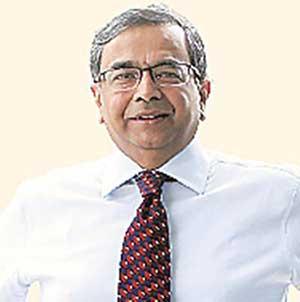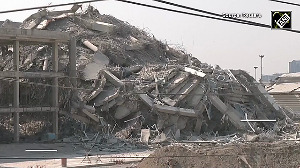'But we still have to be very careful.'

Is this cruel war over for India?
Fingers crossed.
It might be, it might be.
It looks like India is slowly giving COVID-19 the boot.
Kicking the wicked virus out.
Back in early September 2020, India was struggling.
There were enormous fears of extensive rural spread of the virus and dire predictions of the havoc it could wreak.
Statistical modellings done for India indicated that India might eventually rack up as high as 3.6 million* COVID-19 deaths.
Numbers were inching up fast and COVID-19 cases in India were recorded to be the second highest in the world, after America, by the first half of September.
After that too, cases continued to shoot up, even if the grimly growing death rate was not extraordinarily alarming.
It seemed like, in a matter of days, India would eventually top Worldometer** with its number of COVID-19 cases.
But absolutely nothing about SARS-CoV-2, the punishing virus that causes COVID-19, is predictable.
That did not happen.
The virus outwitted expert opinion.
By the end of September, a slow decline in cases began in India, and has been sustained.
If the decline continues, as it is till today, India may well be past the worst, cautiously believes Dr K Srinath Reddy, president of the Public Health Foundation of India:
If we are careful.
If we wear our masks devotedly.
If we maintain social distancing.
If we avoid creating super-spreader events.
If we meet people in well-ventilated spaces.
If we listen to the health authorities.
And if, above all, we are very alert in not allowing that risky, tedious new London/South African mutant variant to gain a firmer foothold in our country.
Professor Reddy, as the president of PHFI, a non-profit working for a 'healthier India', is credited with setting up five Indian Institutes of Public Health, at various locations in the country, to raise the profile of public health education, its research, and for reinforcing our health systems.
He is the advisor to several state governments and has been to WHO.
Trained in cardiology and epidemiology in Hyderabad, New Delhi and Hamilton, Canada, formerly the head of the department of cardiology at the All India Institute of Medical Sciences, New Delhi, he is also an adjunct professor of epidemiology at Harvard and the author of Make Health in India: Reaching A Billion Plus.
Professor Reddy, who has been awarded several honours including the Padma Bhushan, tells Vaihayasi Pande Daniel/Rediff.com: "All the key indicators are pointing in the direction of a receding epidemic, in India, at the moment."
The public health expert affirms that India, as a country, has not done too badly in its management of the pandemic and analyses the reason for the decline.
He also offers a prescription for how the virus can be beaten back further.

From an epidemiologist's point of view, how is India, 11 months on, faring in the battle against COVID-19?
The vaccination programme, experts say, will only begin in earnest by about mid-February, March.
It will take many, many months to complete.
In this interim, do you think there will be further surges - like in the metro areas, which have already been badly affected?
Or will there be spread of COVID-19 to newer areas?
What do you feel is the worst we can expect and what is the best we can expect?
The vaccination programme will be conducted in stages, with initially the essential workers getting it, then the vulnerable people, who are defined by age criteria of 50 plus.
The subsequent group would be the people who are under 50, but still are vulnerable because of associated health conditions or comorbidities.
So, the plan for rolling out the vaccine is already on.
The dry runs are being conducted.
Therefore, we will just have to wait till March for the first phase of the vaccination to begin.
As far as the overall COVID-19 situation in the country is concerned, the epidemic has been contained, as per several indicators.
It is clear that not only has the case count come down, but the daily death count has come down too.
Even the hospitalisation count of serious cases has come down.
Therefore, all the key indicators are pointing in the direction of a receding epidemic, at the moment.
Given the global situation, we still have to be very careful.
There may be a resurgence.
We have to keep all the public health precautions intact, even as the vaccine rollout is now being attempted.

So, you are saying, hopefully, it cannot get much worse?
Given the fact that there have been resurgences in different parts of the world -- including some parts of East Asia, we cannot completely rule out possible further spikes on some occasions, in some parts of the country, whether because of super-spreader events, or because of some of the mutant viruses becoming active, which have now been imported from Britain.
So, there are lots of possibilities we must keep in mind.
Overall, if you look at India, I think the position is fairly clearly of a well-contained epidemic.

COVID-19 can't go to new areas?
Places which haven't seen it before?
Or there can't be some quirky situation that would lead to an overall rise?
The rural areas have some disadvantages and some advantages.
The advantages are very clear.
The spread of the virus in rural areas is likely to be much slower, because people live and work in much more open environments - like the open fields etc.
The crowd density is much less there, than it is in urban areas, and therefore spread within villages and between villages is likely to be much slower.
Comorbid conditions -- like hypertension, diabetes, coronary heart disease -- are lower there, than urban areas.
It's not that they are not there in rural areas, however, the rates are lower than in urban areas.
Therefore, the vulnerability to very serious infection and very serious adverse outcomes, due to COVID-19, is lower in rural areas than urban areas.
The fact that two-thirds of India is rural is helpful in that context.
Even the air pollution levels are lower.
So, there are multiple factors that favour the rural population.
The disadvantage is that the testing facilities are lower.
Secondly, if (more) cases occur, and some of them do turn serious, then their evacuation to hospital facilities will take time.
Those are the things that need to be really attended to.
I think, the governments in the various states are making arrangements to see that good emergency transportation is being made available in different parts.
Overall, the rural areas are better positioned than urban areas.
That is why in South Asia overall, you see far lower rates of mortality.
Age is one contributory factor -- being a younger population.
But the higher proportion of rural population is the other contributory factor.

From March right till October, there was always this fear of the 'rural spread' in India.
But basically, it has not happened for the reasons you just listed.
So, the predictions for a rural spread were not accurate?
I had even then mentioned that the rural spread would be far slower, and the fatalities would be far lower than in urban areas.
Yes, in some places it would happen because migrant labour, who had been confined to urban areas, started returning to their villages.
And also, the country opened up (post the lockdown in around August 2020) -- urban to rural commuting and rural to urban commuting had increased.
So, the spread of the virus was not completely stopped.
But (even so) the rate of spread would have been much slower and morbidity levels in terms of severe infections would have been far lower.

You mentioned an increase in cases in East Asia?
Which country are you referring to?
Not China?
In South Asia, we haven't had much of an increase -- whatever the reasons, I have alluded to, may have helped.
We have now seen cases going up in Japan; cases going up even in South Korea.
So, while they are in no way comparable to what's happening in Europe or North America, there is a sense of concern in these other countries (in East Asia).
There is an interesting fact that needs to be taken into consideration: Most of the resurgence of the severity of the epidemic has been experienced in high-income countries, whether in Europe, North America, Southeast Asia or East Asia.
South Asia and Africa have not had to bear as much of a brunt.
There could be multiple reasons.
The younger age of the population most certainly is a contributory factor.
The greater amount of rural population is another factor.
And then less urban crowd density, overall, in these countries which would be a factor affecting spread dynamics.
Also, lower levels of comorbidities.
So multiple factors have combined to provide greater protection to the countries of South Asia and Africa.
It is also possible that there could be higher levels of nonspecific immunity.
Even when people were exposed to the COVID-19 virus, the effect of the virus in precipitating a clinical infection may not be there -- because many other infections of the past have produced a very strong immune response, because of overall nonspecific immunity.
The fact remains: South Asia and Africa had far lower levels of severe infection and mortality, due to COVID-19, than the economically more advanced countries.

Let me ask you further about the puzzling differences in the way countries have been affected by the COVID-19 virus.
One looks at the awful situation in Los Angeles right now (where, as per latest news reports, one person is dying every six minutes), which is similar to what we saw in New York last April.
Or what's happening in the UK presently.
One always wonders that can this ever be our country's fate at some/any point?
But it has never happened.
It doesn't look like it'll ever happen.
Apart from the fact that these countries, as you mentioned, are more economically advanced and therefore certain factors come into play.
And apart from the fact that we are protected by our nonspecific immunity, due to exposure to a variety of viruses, ie some sort of general umbrella immunity -- Could there be yet more reasons for us luckily escaping an LA or First World kind of situation?
 IMAGE: Dr K Srinath Reddy
IMAGE: Dr K Srinath ReddyIt is difficult to say.
As I said, there are multiple risk factors, which are lower in India than in economically advanced Western populations.
Take overall obesity for instance: Even if in our case overall obesity is not high, what's called abdominal obesity or central obesity is fairly high among Indians.
That's why we have fairly high rates of diabetes and coronary heart disease.
So, while these factors do remain in India, there is certainly an urban-rural gradient, even in this respect.
Much of the rural population is protected.
The rural population being protected, vis a vis the urban population, is easily understandable.
Why South Asia overall has remained protected compared to the Western countries, it is partly because, I believe, of the younger age of the population, as well as the larger rural population.
But even if you look at it crudely, the number of international flights coming in and the number of international travellers landing at any airports is much less (than more economically developed countries).
Obviously, India has more international flights than Pakistan or Bangladesh.
And western India, northern India and southern India have more than eastern India.
And you are seeing the effects of this.
If you compare Bihar and eastern Uttar Pradesh with Gujarat, southern India, Mumbai or Pune, you can see the effect of the advent of international travellers coming in.
It has had an effect on the spread of COVID-19.
These travellers are spreading it both in the cities, as well as in neighbouring districts.
All of these are indicators of the level of economic development.
Strangely, there has been an inverse gradient with the level of economic development.
The less economically developed you are, (then in your area) the virus has had a less opportunity to spread fast.

What is still puzzling for you about why India has not been that badly affected?
What question marks do you still have in your mind when you read about what's happening in LA, and in what's happened in New York?
Well, we still do not know all the reasons for why there has been a greater susceptibility of some populations versus other populations.
But I believe the levels of urbanisation, and the speed of commuting within urban spaces, has given rise to large super-spreader events.
We now recognise that the virus doesn't spread from person to person, on an equal-opportunity basis.
We recognise that about 80 to 90 per cent of all infections arise from 10 to 20 per cent of infected individuals.
It happens when people crowd together, meet together.
If we do not have adequate precautions against that kind of crowding -- whether in closed office spaces or open, crowded political or religious events -- then the likelihood of spreading is much faster, from one person to many people.
That is what has happened in some of these countries, where we have seen that super-spreader events have occurred.
And the United States (for instance) hasn't had any effective measures against super-spreader events in many places, including in California.
We have seen that happen in Britain too; we have seen that happen in Europe.
Even in disciplined societies, like South Korea, where they had efficient control in the beginning, we have seen that every time there is church gathering or a political rally, or some gathering at a nightclub or a bar, then you're having these problems.
Even in the UK, when they declared victory and said 'We can open up now', not only did people start celebrating on beaches, but then incentives were provided for people to go and dine in restaurants and meet in pubs.
And again, the surge took place.

In India, we were used to some amount of crowd density in urban areas.
But nevertheless, these kinds of super-spreader events were not as frequent.
And adherence to public health advice on masks etc, while it could have been better -- I always find people wearing masks not the right way -- there was no protest against the mask.
There was no organised resistance against the mask.
We were far more disciplined in observing the public health advisories.
*As per the March paper by The Global Macroeconomic Impacts of COVID-19: Seven Scenarios by Warwick McKibbin and Roshen Fernando
**Worldometer (external link), is a data Web site that delivers real-time statistics for COVID-19, country by country.
Feature Presentation: Ashish Narsale/Rediff.com












 © 2025
© 2025